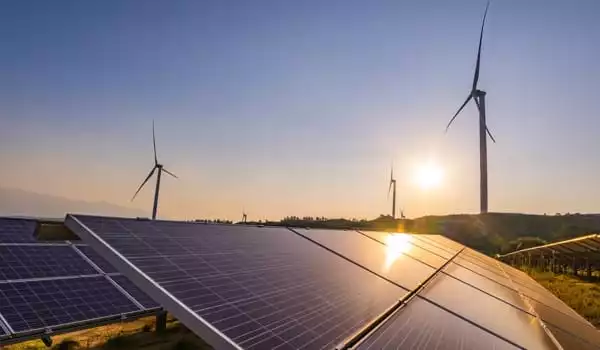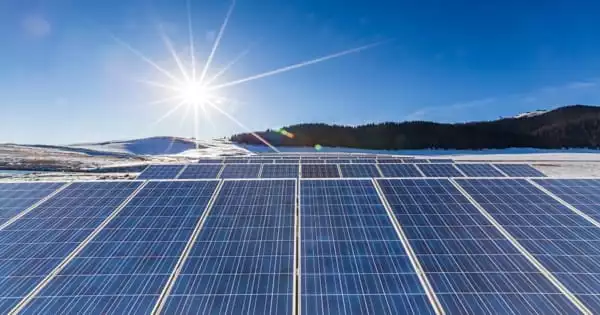Solar panels are one of the best and most rapidly advancing forms of renewable energy on the market, and it’s easy to see why. They help to save energy that would otherwise be drawn from the grid, they reduce your energy bills, and they can provide you with an excellent financial return. While the initial costs may be high, the payback period is relatively short, so don’t eliminate them just yet.
With the increasing use of solar energy for both domestic and commercial energy solutions, it has emerged as a leading source of renewable energy as governments and individuals seek to reduce their reliance on fossil fuels and reduce their carbon footprint. Solar-powered technologies harness the sun’s abundant energy to generate electricity, which powers our homes and technology. Although not a perfect solution, solar panels, and solar-powered technology are propelling us toward a more sustainable future.
Scientists have discovered a new process involving coordination materials that have the potential to accelerate the use of low-cost, Earth-abundant materials that have the potential to transform the energy sector by replacing silicon-based solar panels.
Thanks to Newcastle University-led research, technology based on a new generation of hybrid solar cells is one step closer to mass production. An international team of scientists has discovered a new process based on coordination materials that have the potential to accelerate the use of low-cost, Earth-abundant materials with the potential to transform the energy sector by replacing silicon-based solar panels.
The majority of progress toward the goal of using low-cost and abundant materials has come from the advancement of light-absorbing materials. Charge transfer issues continue to be a barrier to widespread adoption of this solar technology, and this is the problem that our research attempts to solve.
Dr. Marina Freitag
The team, led by Newcastle University and including colleagues from Uppsala University in Sweden and the University of Naples Federico II in Italy, developed dynamic dimeric copper complexes using tetradentate ligands and published their findings in the journal Chem (the ligands that bind four donor atoms). These new copper systems provide a novel combination of fast charge transport in a previously unknown two-electron redox mechanism while inhibiting carrier recombination after disproportionation.
The dynamic dimer system ushers in a new era of efficient redox mediators for molecular devices. It has the potential to help power photovoltaic devices with minimal voltage losses and relatively low reorganization energies and recombination rates.

Dr Marina Freitag of Newcastle University’s School of Natural and Environmental Sciences, who co-led the study, stated: “The majority of progress toward the goal of using low-cost and abundant materials has come from the advancement of light-absorbing materials. Charge transfer issues continue to be a barrier to widespread adoption of this solar technology, and this is the problem that our research attempts to solve.”
Prof Ana Belén Muoz-Garcia of the University of Naples Federico II, who co-led the study, stated, “This work demonstrates that fundamental research combining experiments and theory can provide solid scientific grounds to optimize materials and interfaces for renewable energy technologies with real societal impact.”
Solar power is a type of renewable energy because of the enormous amount of solar energy produced by the sun. Solar panels, unlike traditional fossil fuel technologies, do not actively emit any emissions when they capture the sun’s energy and convert it to electrical energy to power our technology. Solar panels are good for the environment because they are a non-polluting source of energy. The combustion of fossil fuels produces enormous amounts of pollution and necessitates a significant amount of water for cooling. Furthermore, the processes generate contaminated materials, which can be extremely harmful to the environment if not properly disposed of.
One of the most sustainable aspects of solar energy is that it is all around us. There is solar energy when the sun shines. Other types of energy necessitate specific geographical conditions or resources. The great thing about solar is that if you have a panel, you can generate energy almost anywhere on the planet, reducing the need for power to be transported long distances.
As an alternative to fossil fuels, the increased use of solar panels will improve its sustainability by reducing our reliance on and total emissions from fossil fuels. Although fossil fuels are considered a cheap source of energy, the cost to the environment and the work required to mitigate its effects would be significantly higher. As we see an increase in the use of renewable energy and a reduction in the use of fossil fuels on a large scale, we will see a decrease in air and water pollution as a result of the many positive effects that will result. So, when considering whether solar panels are sustainable, we should consider the positive impact of reducing the total impact of fossil fuels and carbon emissions.














